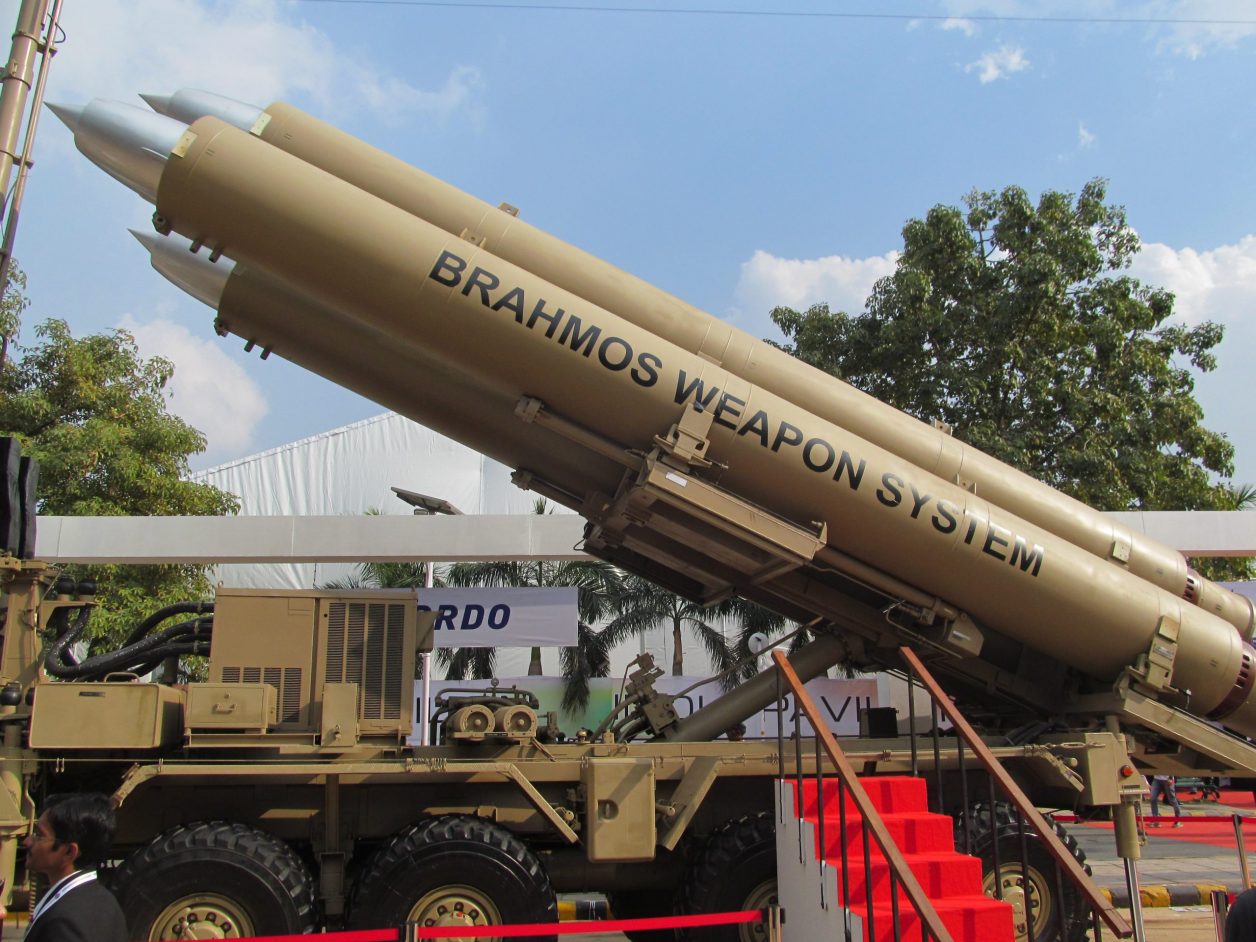India’s BrahMos supersonic cruise missile recently made headlines for the wrong reason. An unarmed missile had accidentally landed in Pakistani territory last week, sparking a huge controversy. But this was not the only time India’s Russian-origin ‘supersonic weapon’ caused an uproar in Islamabad.
A few days after the incident, BrahMos was back in the news as reports emerged that India was working to increase the range of the air-launched version of the weapon. The extended-range BrahMos missile would be able to strike at enemy targets at more than 800 kilometers, reported ANI.
Previously, the missile was capable of reaching targets at a range of roughly 300 kilometers after being launched from a Su-30MKI fighter jet.
The Navy version of the BrahMos has a range of 350-400 kilometers. On March 5, prior to the incident, the missile was successfully test-fired from the INS warship. During this test, the missile hit its target with pinpoint accuracy.
It is said that the BrahMos missile is also capable of avoiding radar detection. India has been constantly enhanced the range — from the initial 290 kilometers, it was increased to 350 to 400 kilometers. Now, the air-launched variant will have a range of 800 km.

On March 9, an unarmed BrahMos missile accidentally landed in Pakistan. India said a “technical malfunction led to the accidental firing of the missile”. The incident happened during a Command Air Staff Inspection (CASI).
The supersonic missile did not cause any major damage, destroying just a wall in Mia Channu, a small town in Pakistan’s Khanewal province in Punjab, about 124 kilometers from the Indian border. Following the incident, India expressed its sincere regret, by issuing a statement on the matter.
While Pakistan had conveyed its strong protest over the “unprovoked” violation of its airspace through the diplomatic channel, the incident did not escalate.
Nevertheless, the missile mishap raised questions about the efficacy of Pakistan’s air defense systems. Despite Pakistan’s claims that it was monitoring the missile, the fact remains that Pakistan does not have an answer to India’s supersonic weapons be that the BrahMos missiles or fighter jet.

Pakistan’s Supersonic Woes
Reacting to the BrahMos incident, Pakistan Prime Minister stated on March 13, “We could have responded after an Indian missile fell in Mian Channu but we observed restraint.”
According to PTI, Khan made this statement while speaking at a public rally in Punjab’s Hafizabad area. “We have to make our defense and country strong,” he said.
This is not the first time that the Pakistani air defense failed to act in time. From 1981 to 2006, the Indian Air Force (IAF) had conducted frequent and regular reconnaissance missions over Pakistan but has never revealed the specifics of such missions.
The aircraft utilized was a reconnaissance (spying) version of the Russian MiG-25, one of the world’s fastest fighter warplanes ever (NATO codename: Foxbat).

The Pakistani military and political leadership were reportedly aware of the overflights by India’s MiG-25 but chose to remain silent so as not to inform their citizens that the Pakistan Air Force was incapable of intercepting them due to its supersonic speeds.
The MiG-25s flew at Mach 2.8, or roughly 3,500 kmph, at altitudes of 65,000 to 85,000 feet, while the Pakistani F-16s (maximum speed Mach 1.9) couldn’t get above 50,000 feet.
In May 1997, the Pakistani people first learned of the demoralizing overflights when a sonic explosion was heard over Islamabad. An IAF MiG-25R flew deep into Pakistani territory on a reconnaissance mission, photographed important defense locations, and broke the sound barrier, generating a huge sonic boom above Islamabad.
This caused widespread panic in Pakistan. The incident prompted the PAF to scramble its US-made F-16 fighter jets, but without any success.
The MiG-25 sonic boom over Islamabad was documented by veteran journalist Amit Baruah in his book Dateline Islamabad. “On May 27 (1997), I rushed out of the house as a series of ‘explosions’ were heard,” Baruah says in the book. According to Baruah, the intruder was described as an IAF MiG-25 by the Pakistan Air Force.

“The Pakistanis, I was told, could do nothing as that aircraft flew at a height of 60,000 feet. There was nothing in the Pakistan Air Force (not even the F-16) that could come close to the height at which the MiG-25R flew,” Baruah adds.
The aircraft was practically undetected to Pakistan’s radar network because it was flying near the edge of space. Only the sonic boom enabled a Pakistani forward operating base to track the Foxbat and dispatch F-16As fighter jets from the Sargodha airbase.
The incident was disputed by India, but Gohar Ayub Khan, Pakistan’s Foreign Minister at the time, claimed that Foxbat photographed key installations near Islamabad. Islamabad regarded the breaking of the sound barrier to be a planned move aimed at demonstrating that the Pakistan Air Force (PAF) possessed no aircraft capable of matching the MiG-25’s cruising height.
The Indian Air Force received the MiG-25 in 1981, after purchasing only 10 planes from the Soviet Union. The Indian Air Force’s 102 ‘Trisonics’ squadron was the first to pilot the MiG-25.
The MiG-25 was untraceable and unstoppable due to its massive capability. From 1981 to 2006, it soared unchecked across Pakistan and Tibet’s skies. Foxbat was able to take high-resolution photos of military installations as well as radar scans of their communication networks. The jet apparently flew 15 to 20 flights per month on average.
The Indian Air Force decommissioned the MiG-25 in 2006 due to rising maintenance costs and the availability of more advanced surveillance systems such as satellites, unmanned aerial vehicles, and long-range digital electronics.
- Contact the author (s) at etdesk@eurasiantimes.com
- Follow EurAsian Times on Google News




